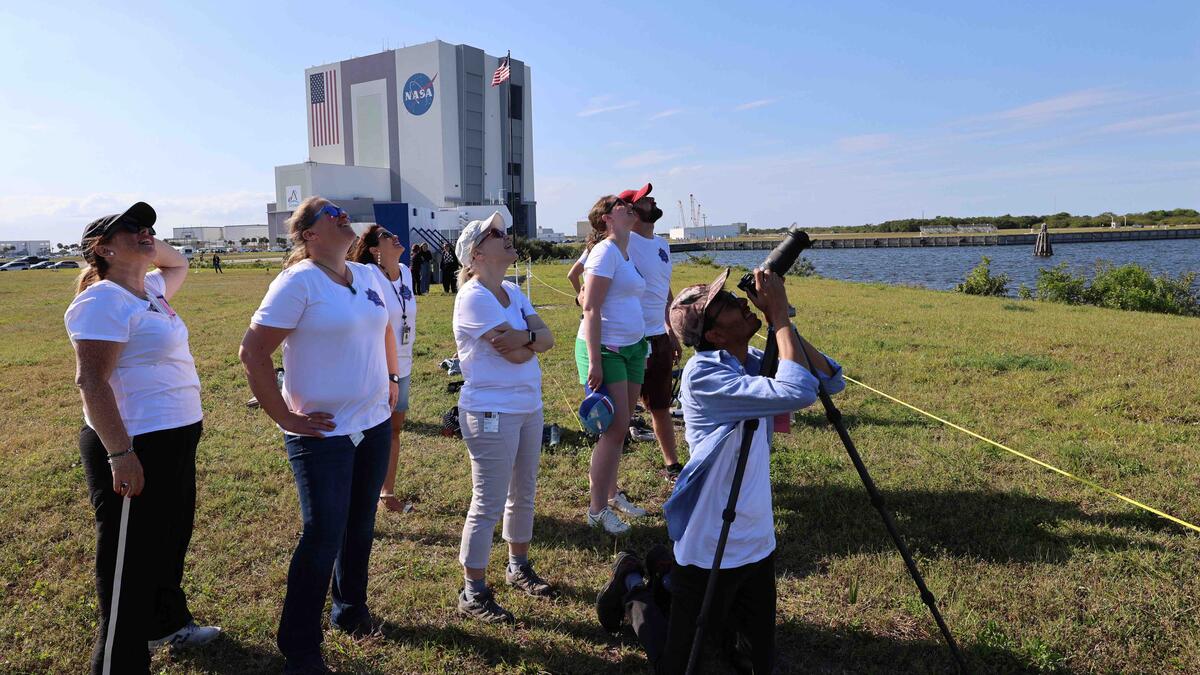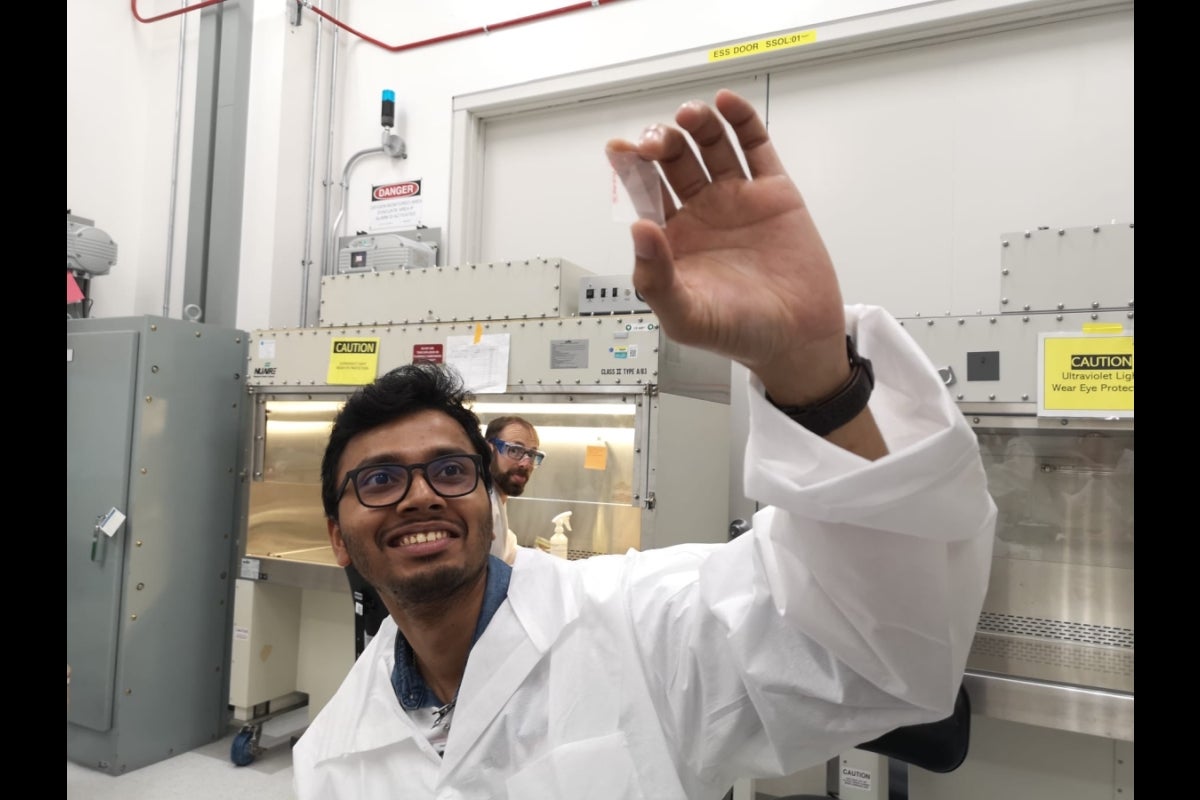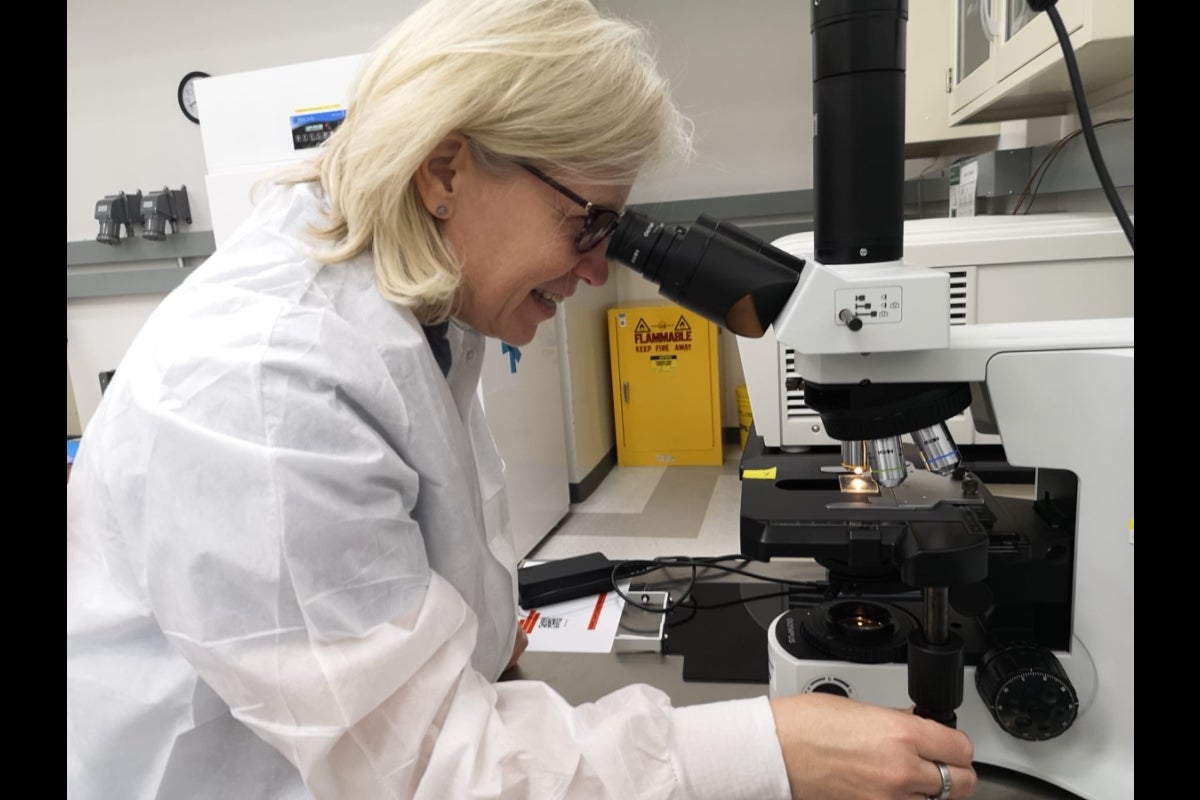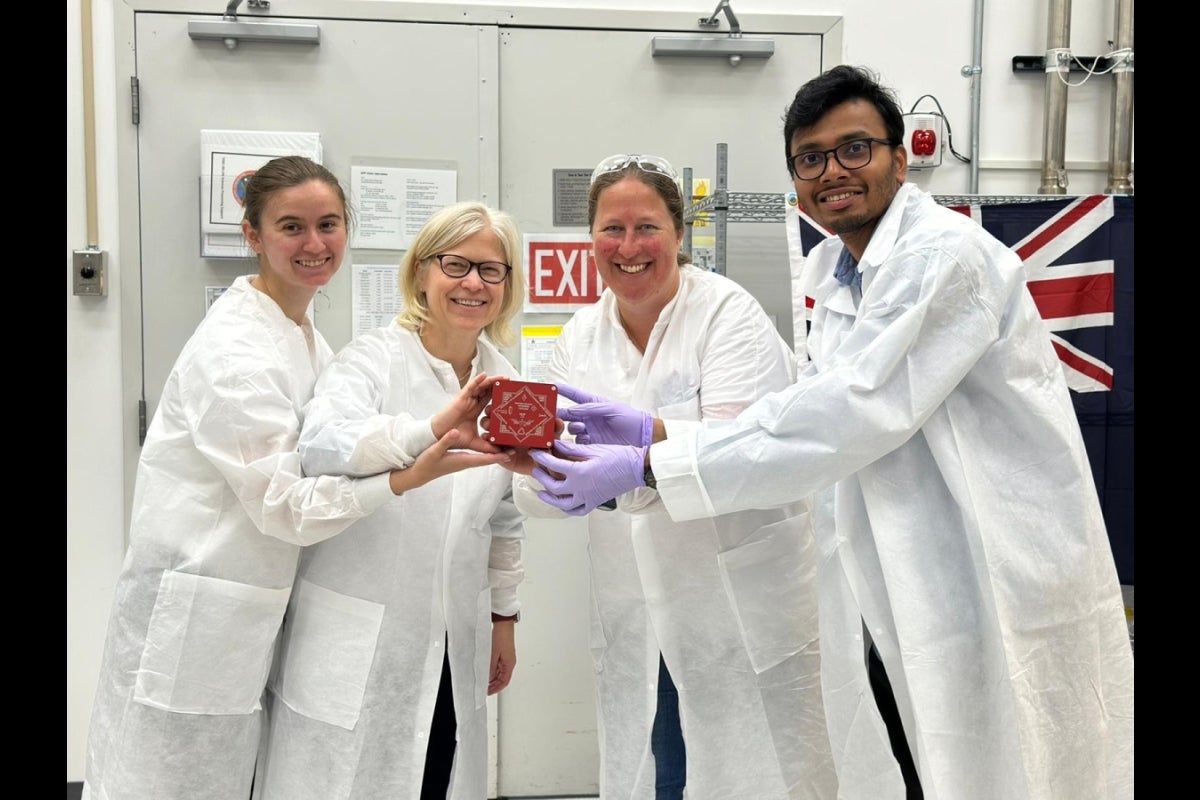ASU researcher successfully launches protein crystals into space

The research team looking up in the sky at the press viewing area at Kennedy Space Center (from left): Sarah Wiki-Bennett, Sarah Kessans, Yvonne Stiles, Alexandra Ros, Sarah Pratt, David Write and Abhik Manna. Photo courtesy Alexandra Ros
Nearly four years since the project began, a new scientific milestone was reached on Saturday, March 23, at 7:19 a.m. ET when SpaceX’s Cargo Dragon Capsule docked at the International Space Station, delivering a red Rubik's-Cube-sized box that will be growing protein crystals in space.
Alexandra Ros, professor in Arizona State University’s School of Molecular Sciences and faculty member in the Biodesign Center for Applied Structural Discovery, alongside a team of international scientists, will be studying ASU-developed devices that enable protein crystallization in microgravity.
The research led by Sarah Kessans, an ASU alumna and senior lecturer at the University of Canterbury School of Product Design, will test the specialized hardware and software systems and monitor if protein crystallization can be carried out in high quality in space’s microgravity environment through a partnership with United States-based company Axiom Space.
ASU News spoke to Ros about the project, what it was like to be on-site at the rocket launch, and why we’re exploring growing protein crystals in space.
Question: How did this project begin?
Answer: Four years ago, I was contacted by Sarah Kessans, an ASU alumna who lives in New Zealand, and who also at one point trained to become an astronaut. She wanted to do protein crystallization in space and saw our paper that we published several years ago where we developed a microfluidic device that allows protein crystallization screening.
Q: For someone not familiar, what is protein crystallization and what can you tell us about its importance?
A: Protein crystals are used for crystallography. Having a 3D version of a protein helps us infer how a protein might function, and we can learn things like how a protein might bind to a drug.
To do this, you bring protein crystals into the path of an X-ray beam. You shoot X-rays at them. The X-rays will diffract, and that diffraction is recorded as an image. That image, with data analysis methods, will give you a 3D structure of that protein.
Q: Why grow these crystals in space and not just here on Earth?
A: Under microgravity conditions, protein crystals grow in better quality. Some proteins never crystallize on Earth and some crystals' qualities aren’t sufficient enough for us to use them for structure determination with X-ray crystallography.
What we want to do is to figure out the best conditions of protein crystallization in space, and we’re doing it on a microfluidic platform that we developed.
Q: Has this been done before? How is this different from what's been done in the past?
A: Yes, protein crystallization in space has been done, but we're using a new screening device we developed to crystallize the proteins. With these new microfluidic devices, not only will we be able to grow the crystals but also then take the devices themselves into the path of an X-ray beam and use them to directly obtain information.
Q: Can you tell us more about what you sent to space?
A: We sent a nice, reddish-looking box specifically designed for space travel. That box was filled with a range of different microfluidic protein screening devices. Each of the different devices contains a different protein, so we can get an idea of whether we can do this on a high-throughput scale. We won’t get any information back until these devices come back to Earth and we can visually inspect them and see whether they have grown crystals or not.
Q: What is the end goal of the project?
A: The idea behind this project is that potentially, one day, one could offer a commercial service to commercialize protein crystallization in microgravity environments. We’re first figuring out whether a platform is high enough in throughput and gives the right scientific outcome in terms of protein crystallization, and we're going to figure out the steps that need to be done to answer that question.
Q: What's next in this research?
A: The space flight takes 34 days. In 34 days, we hope to recover all the devices and then we'll study the crystals that hopefully formed in them.
Q: Can you describe for us how you felt being on-site at Kennedy Space Center when the rocket launched carrying your microfluidic devices?
A: It’s hard to describe, really. Witnessing a rocket launch is different than just viewing it on the screen. We were close enough so that we could feel the vibrations and hear the sounds from the launch. I'm super grateful to have the opportunity to work on this project. It's something that I've never expected to do in my career.
More Science and technology

Diagnosing data corruption
You are in your doctor’s office for your annual physical and you notice the change. This year, your doctor no longer has your health history in five-inch stack of paperwork fastened together with…
Large-scale study reveals true impact of ASU VR lab on science education
Students at Arizona State University love the Dreamscape Learn virtual reality biology experiences, and the intense engagement it creates is leading to higher grades and more persistence for biology…

ASU-led space telescope is ready to fly
The Star Planet Activity Research CubeSat, or SPARCS, a small space telescope that will monitor the flares and sunspot activity of low-mass stars, has now passed its pre-shipment review by NASA.…






